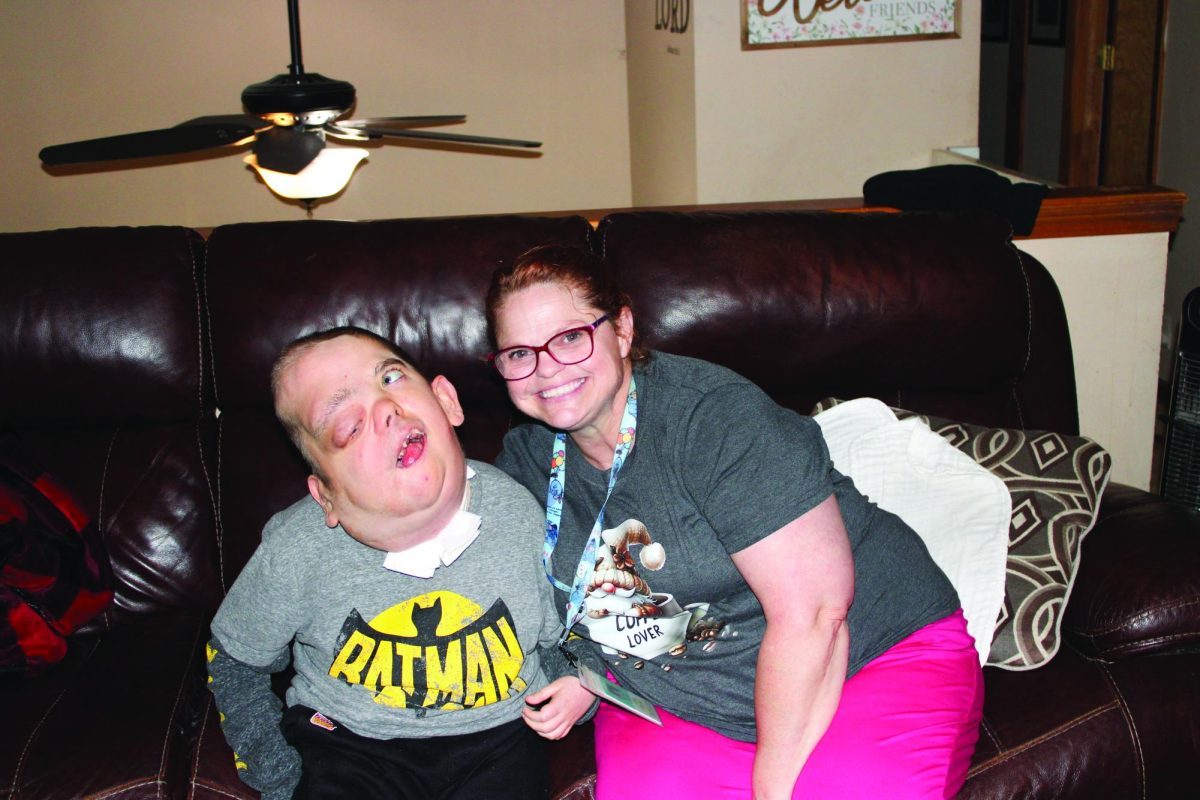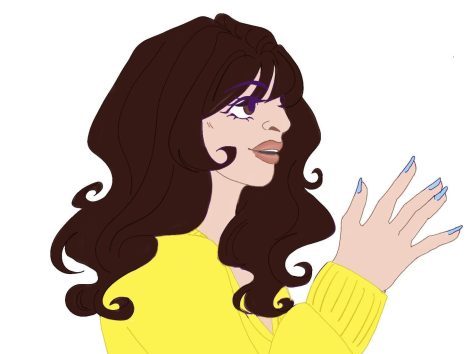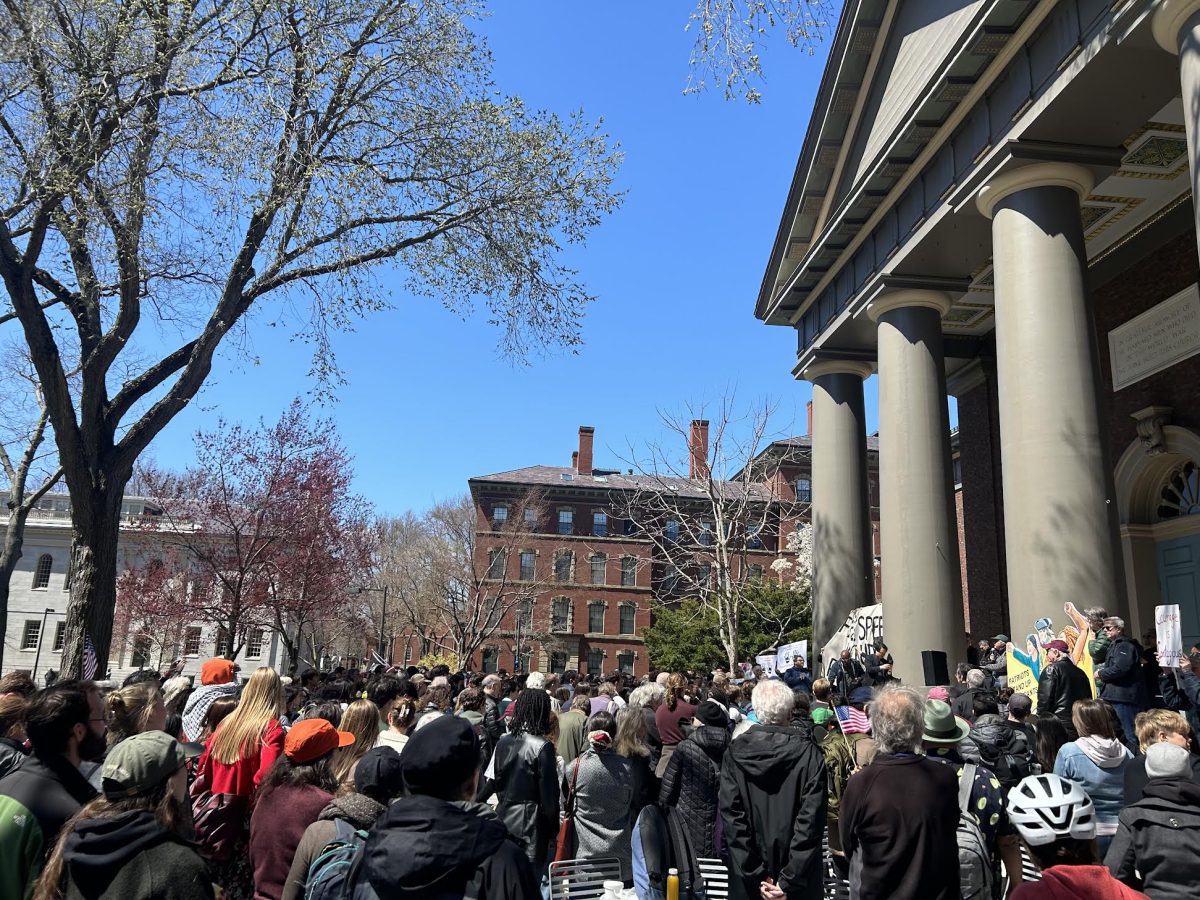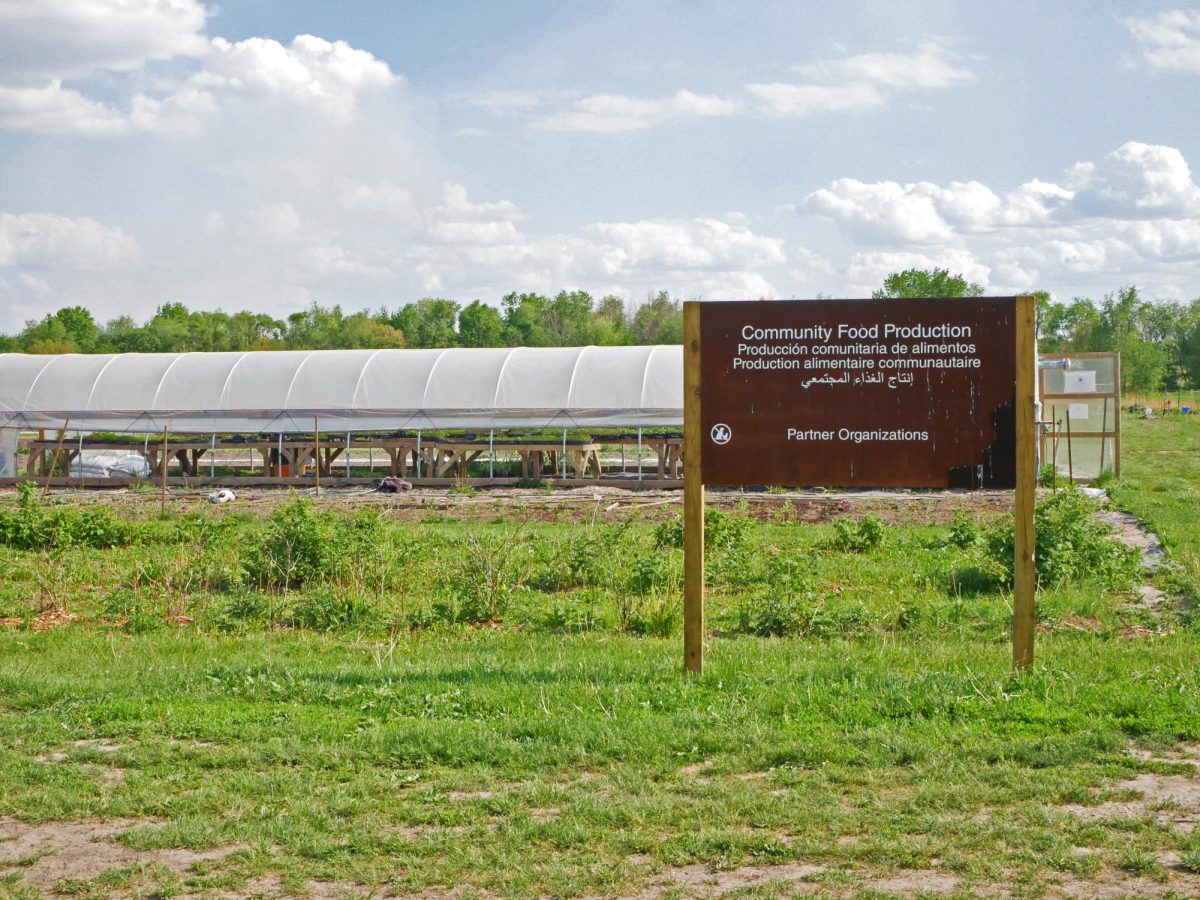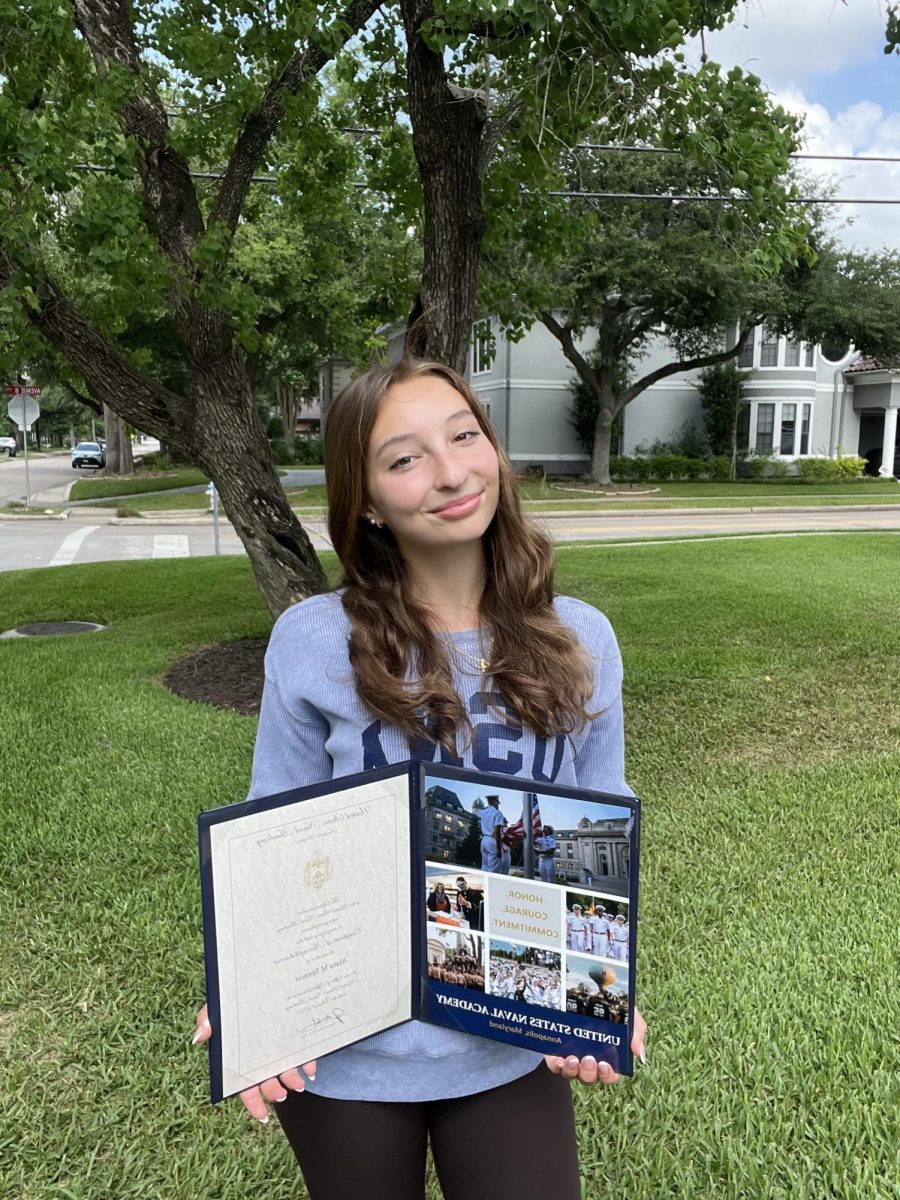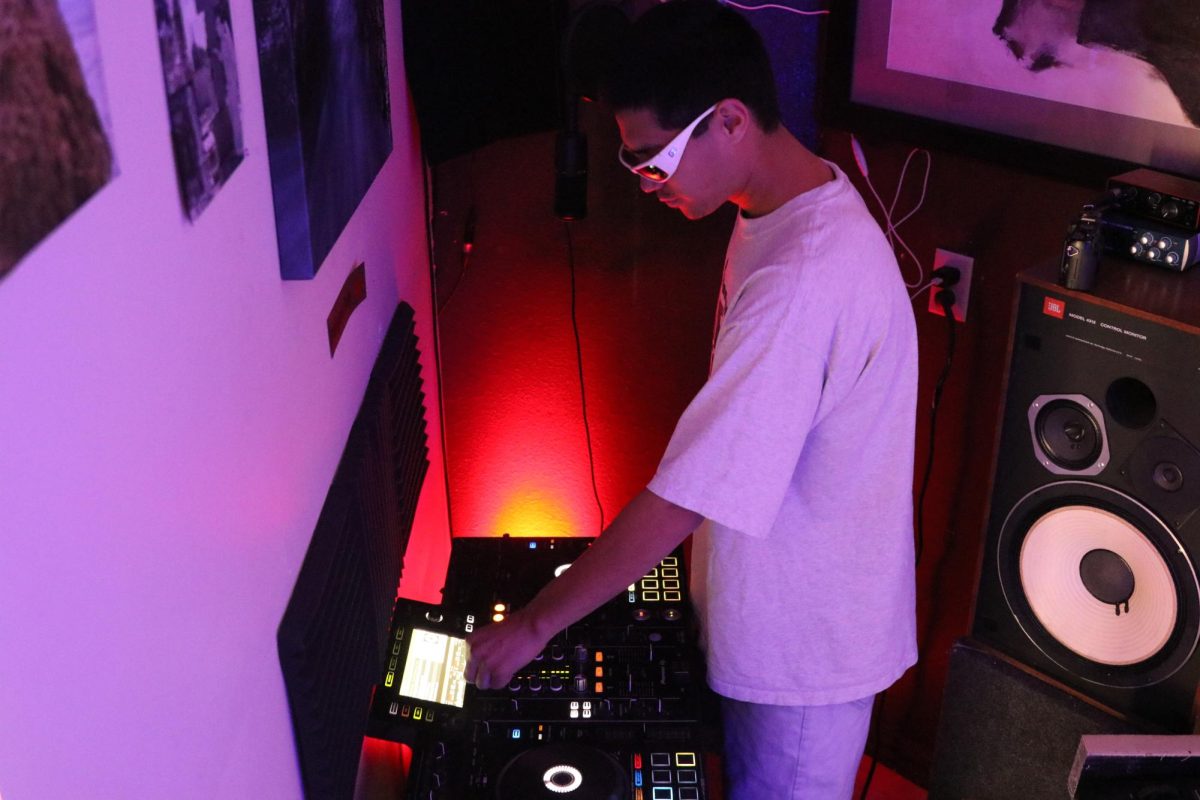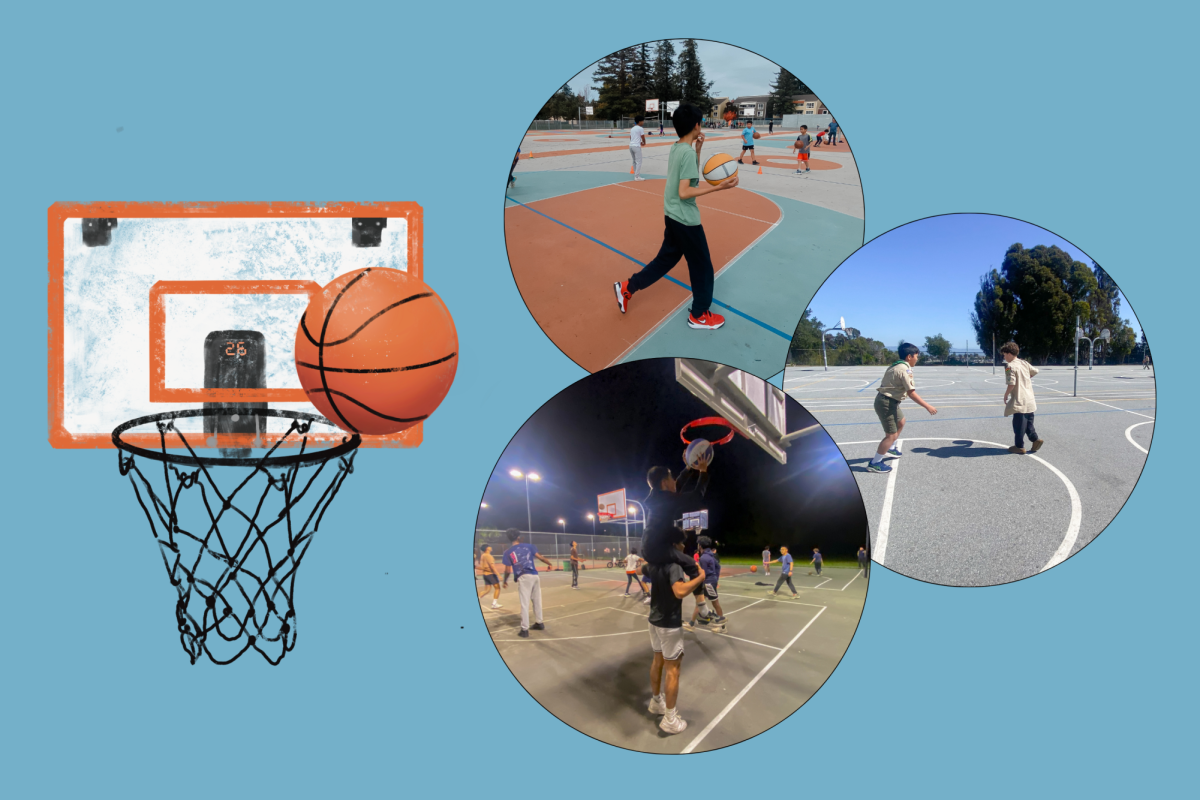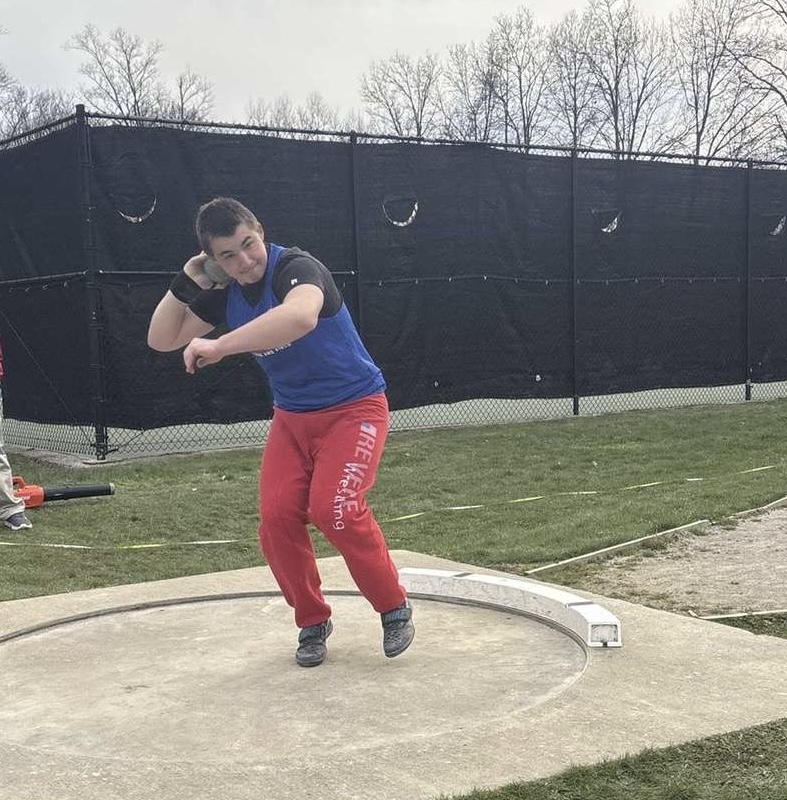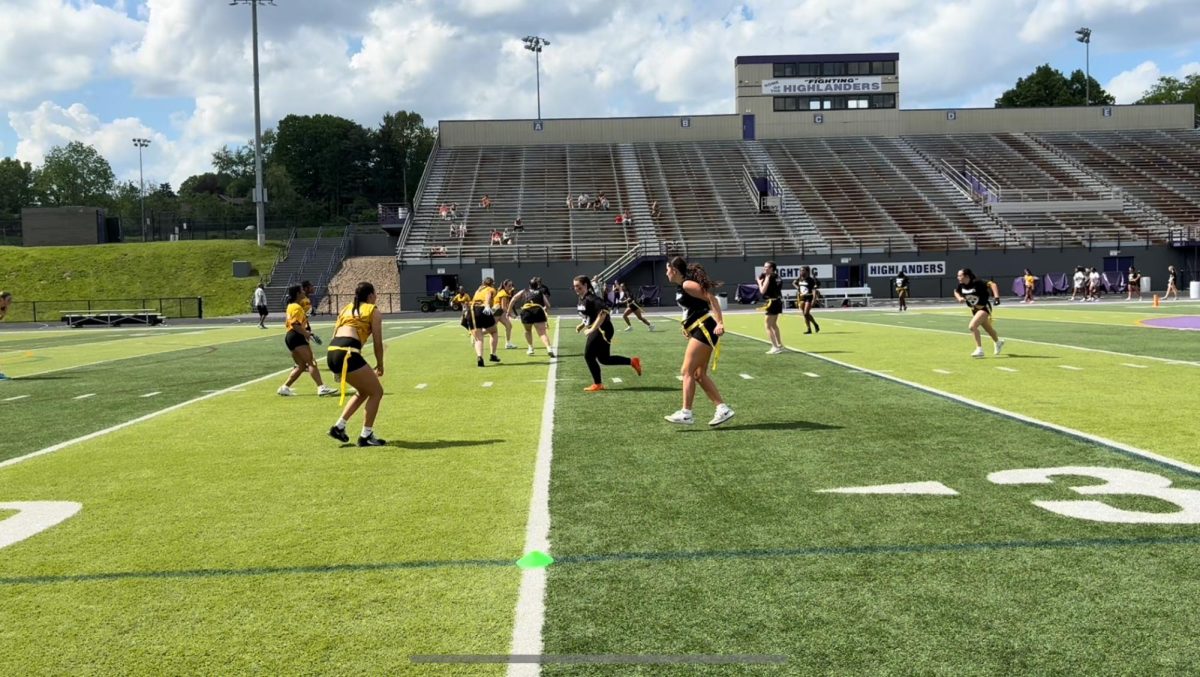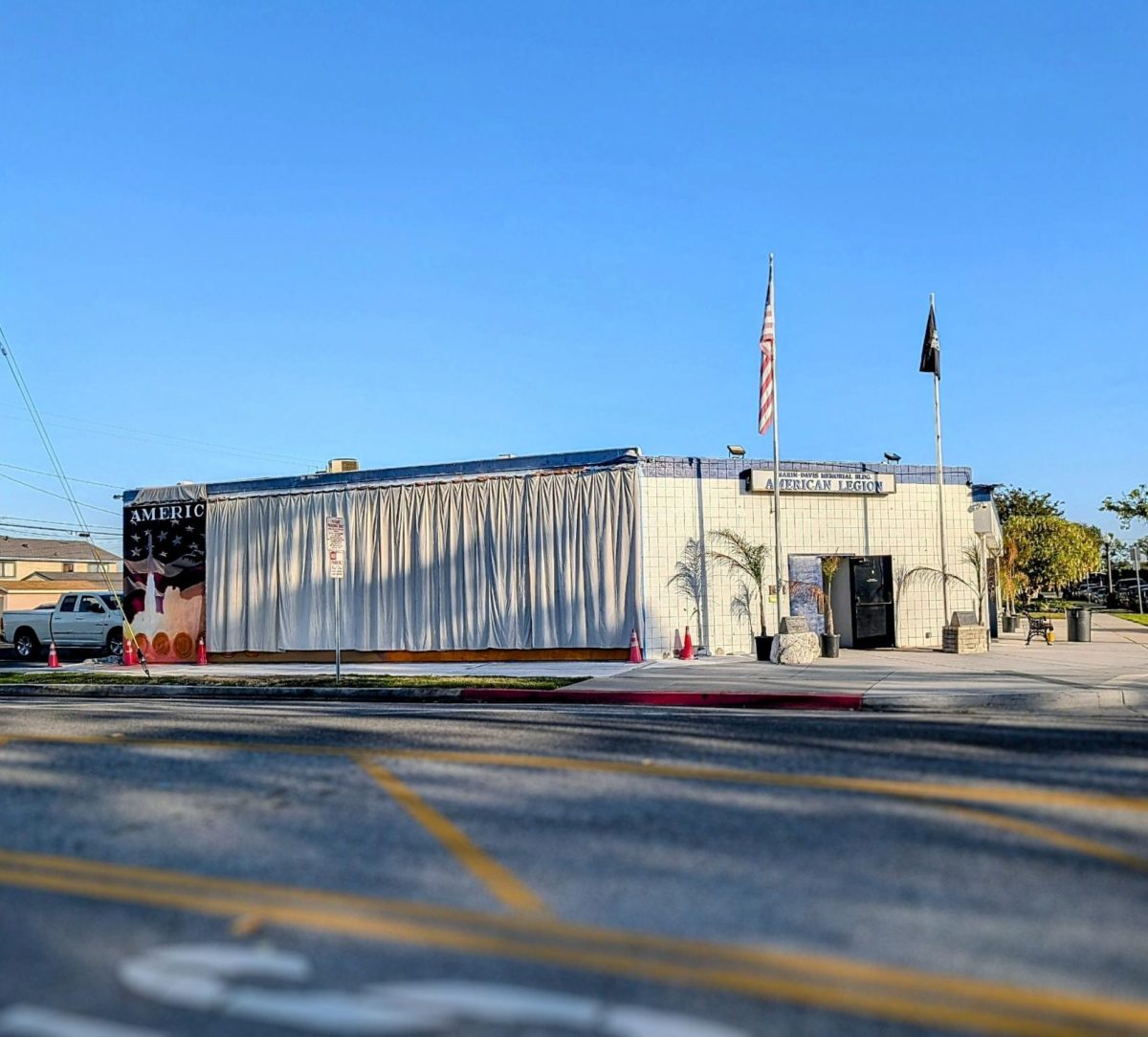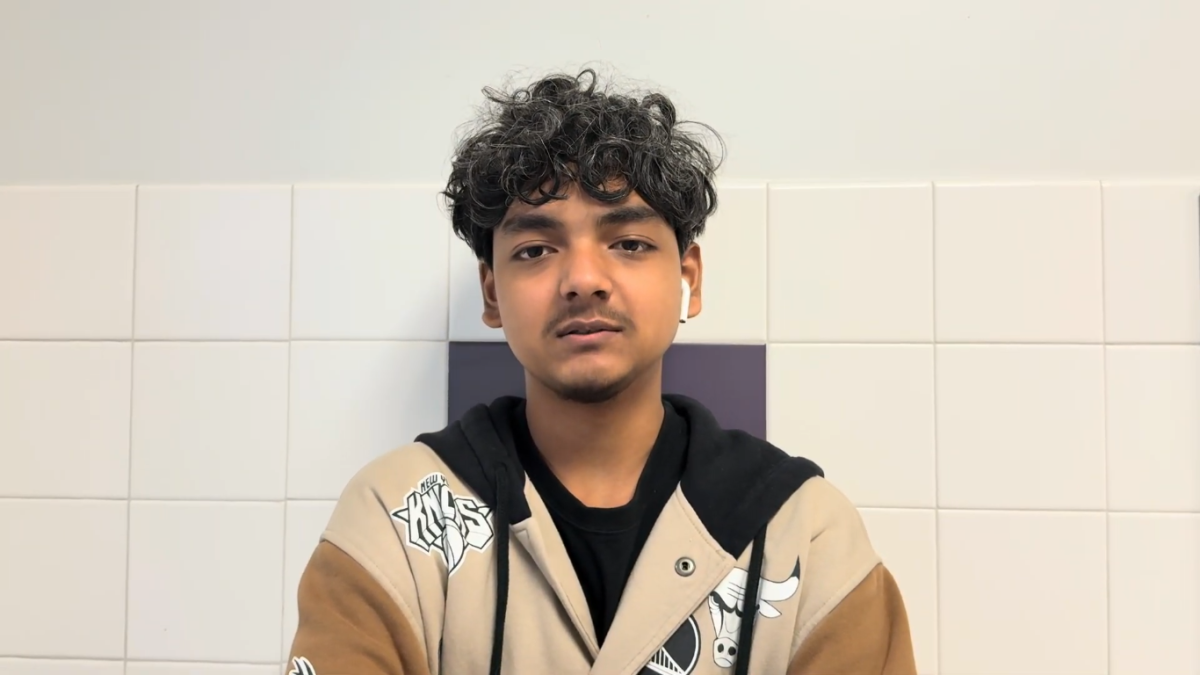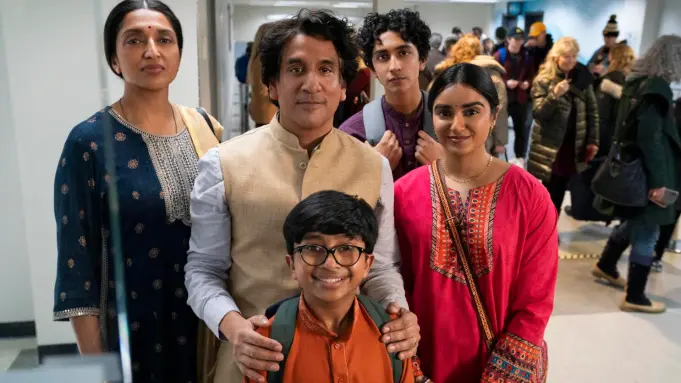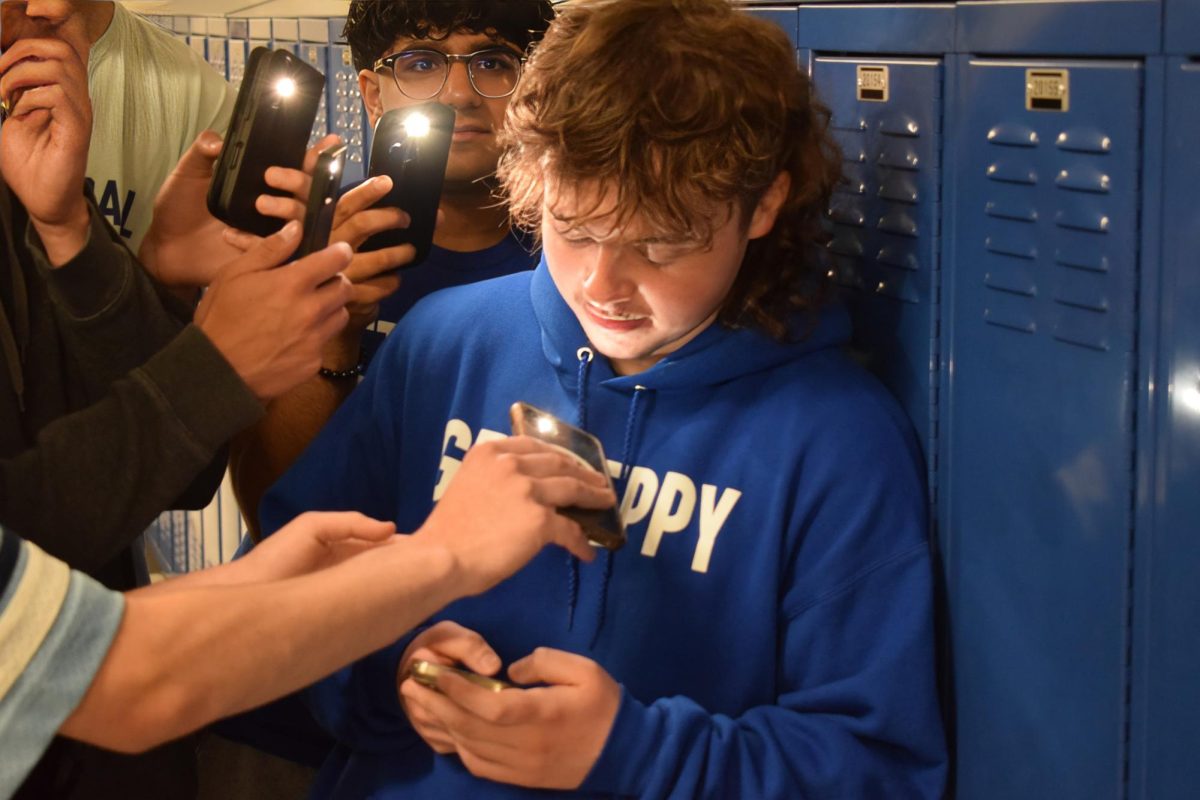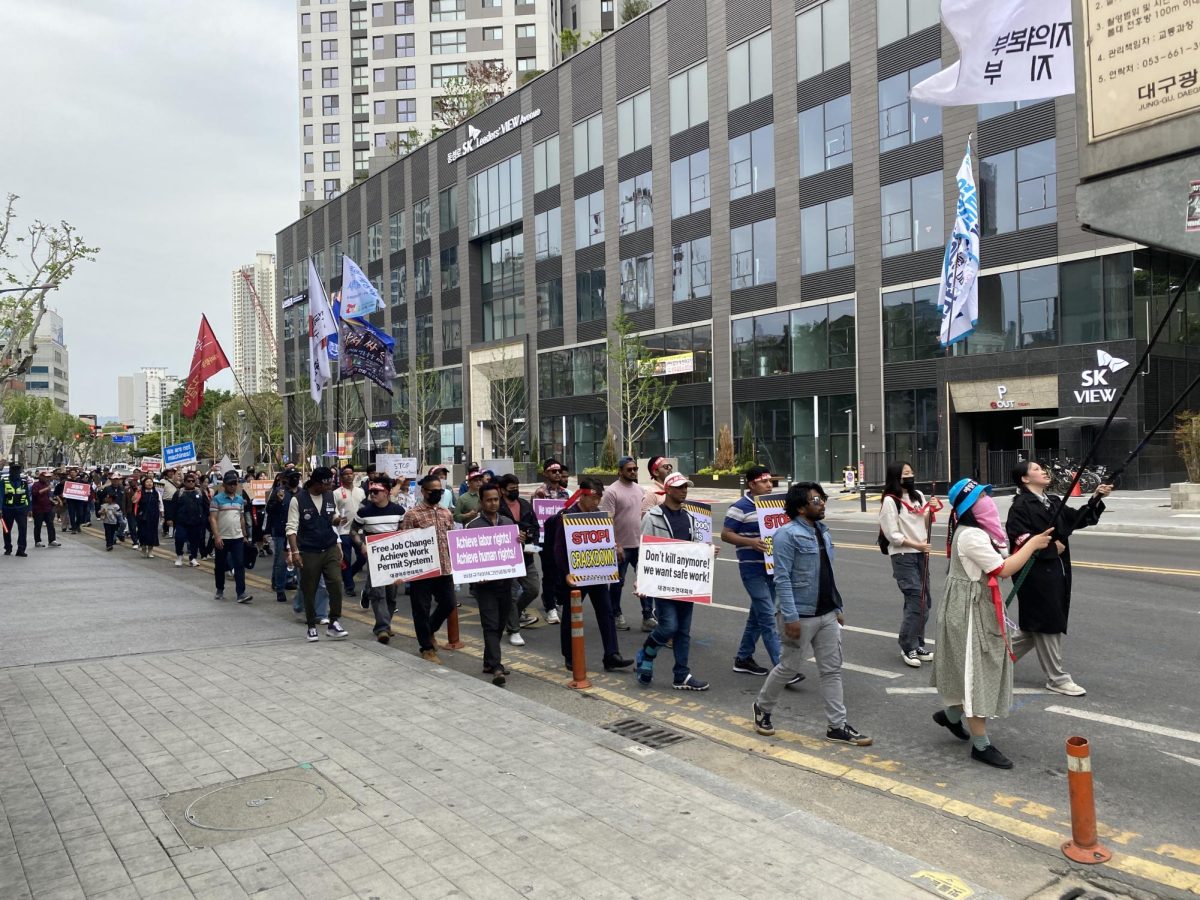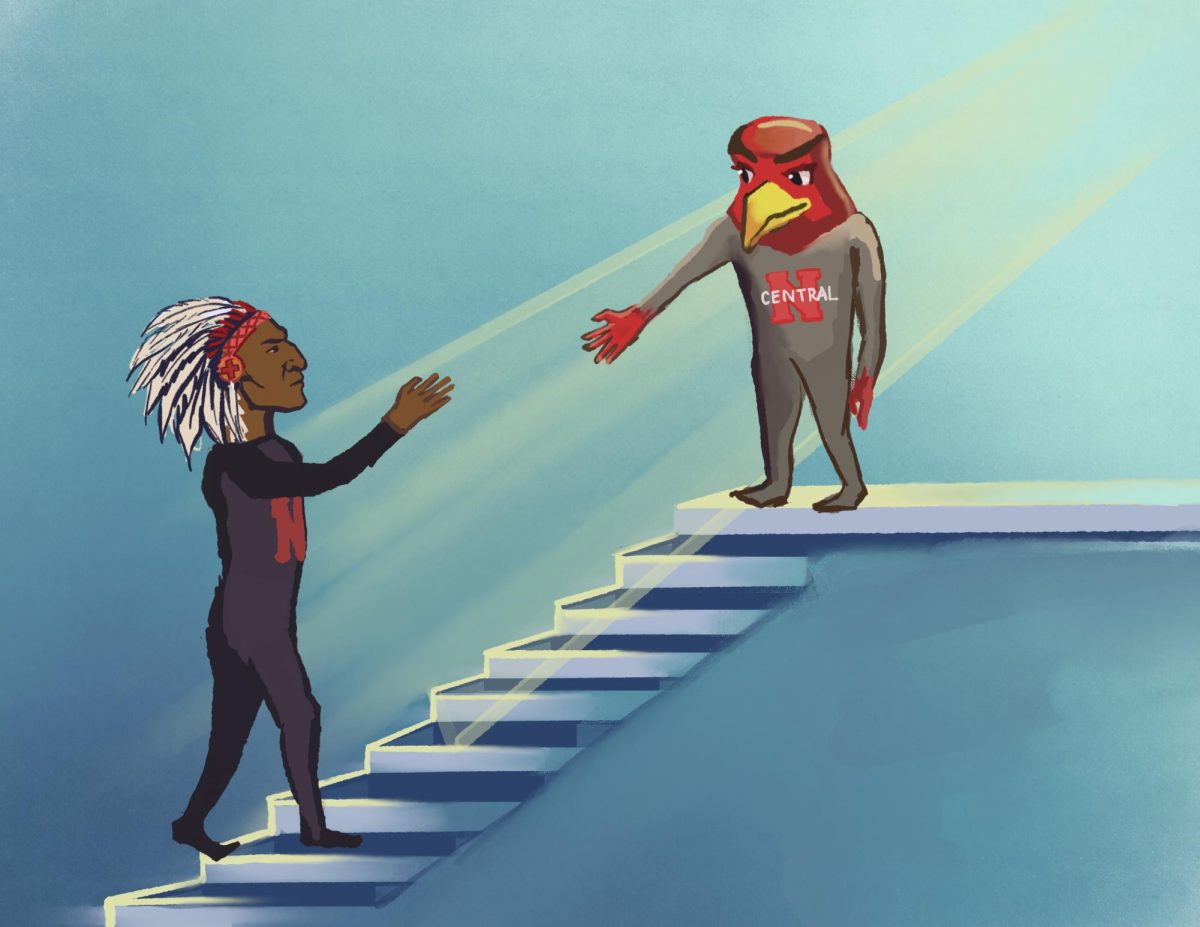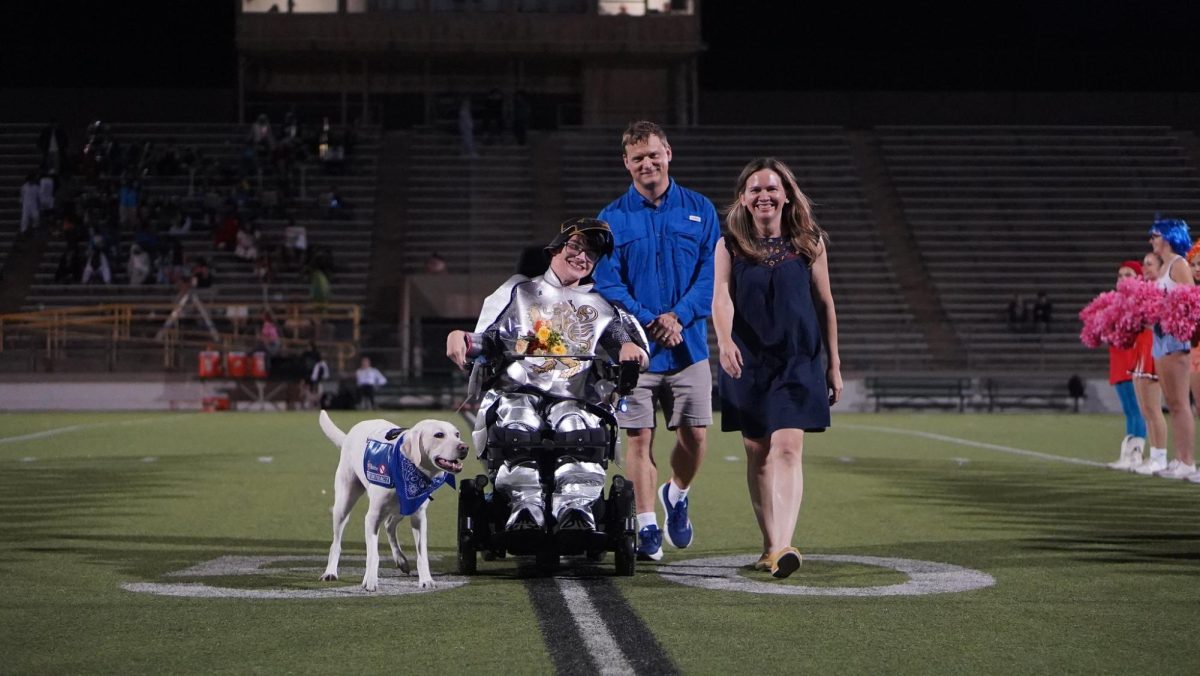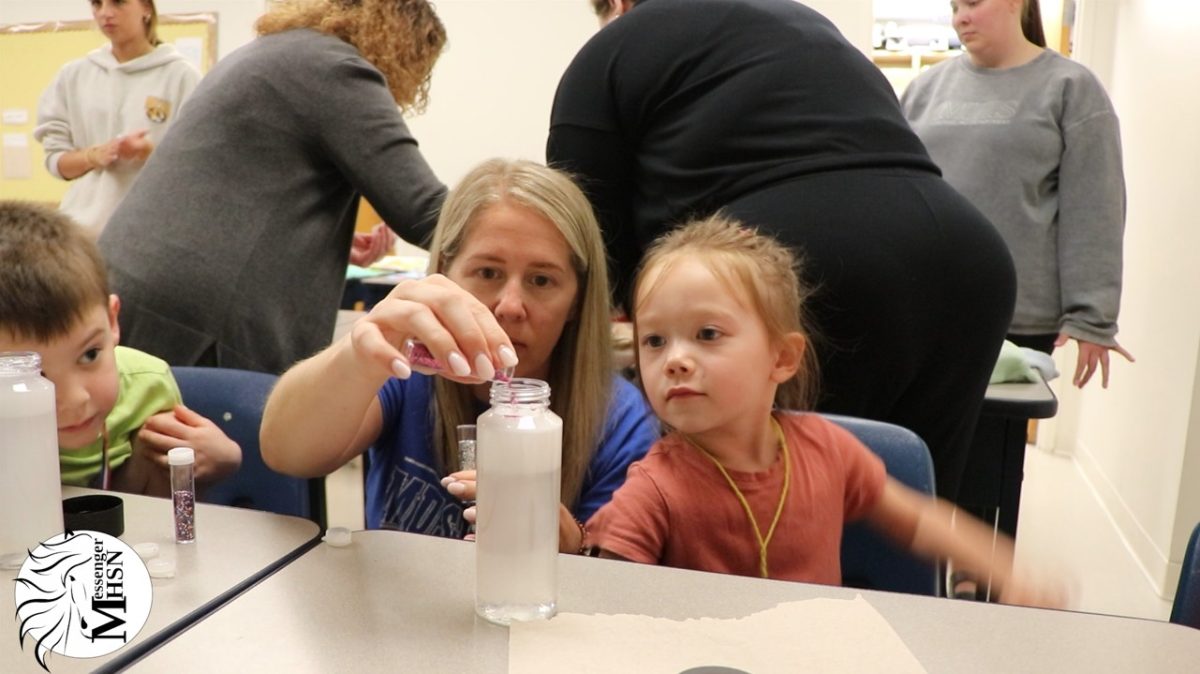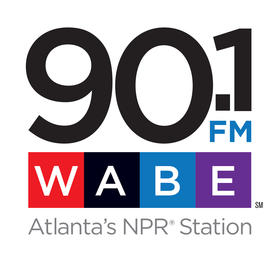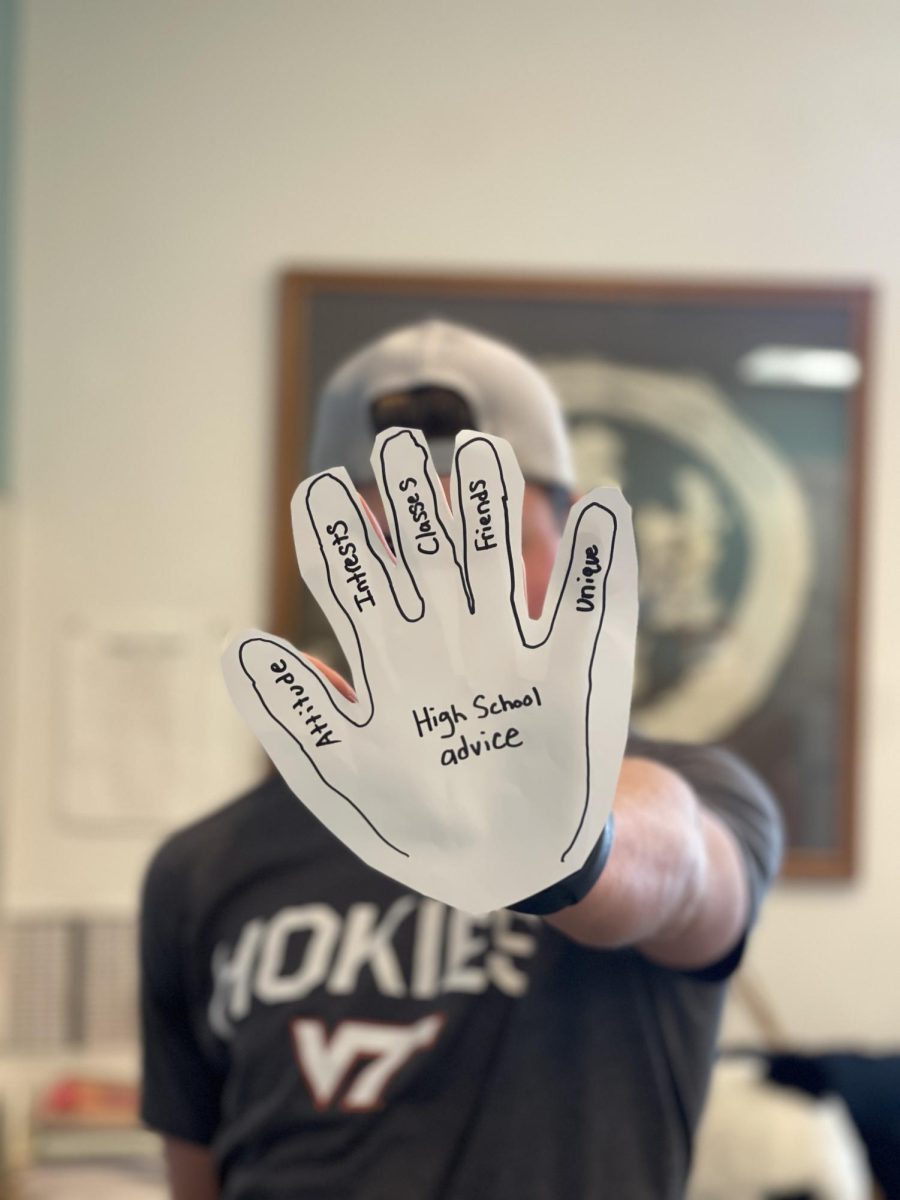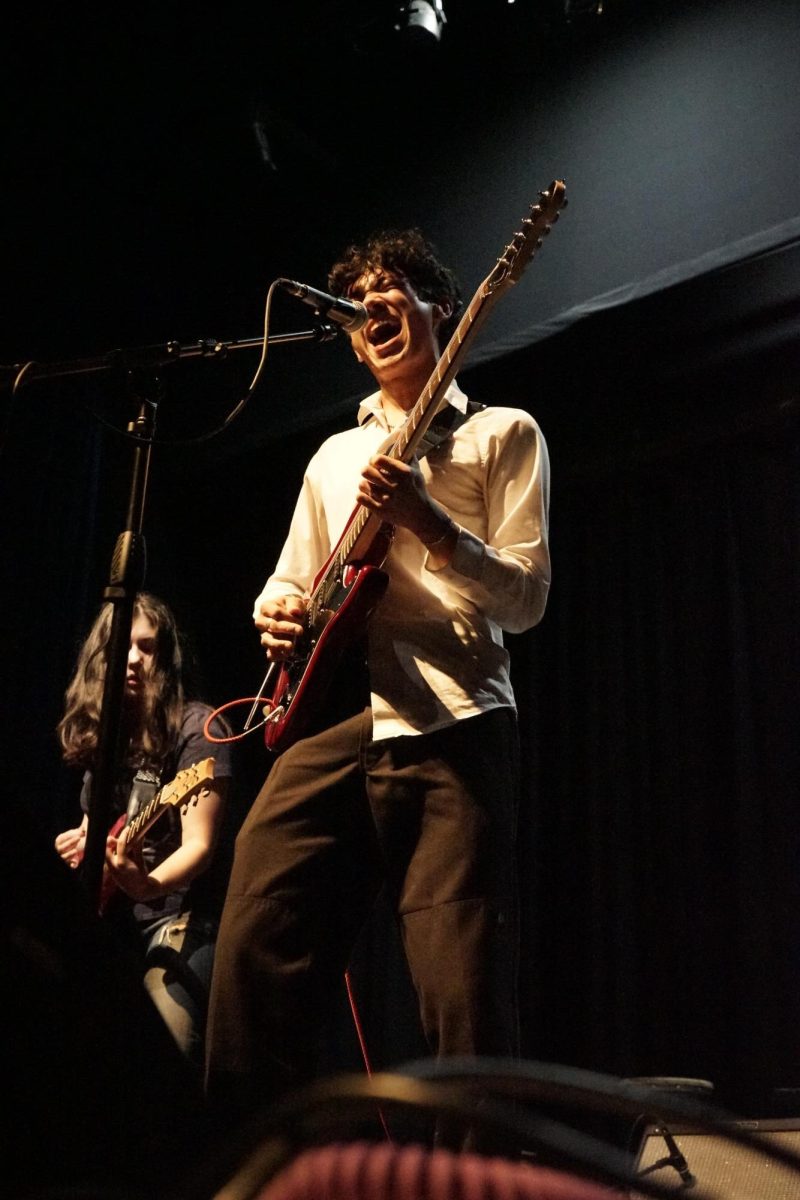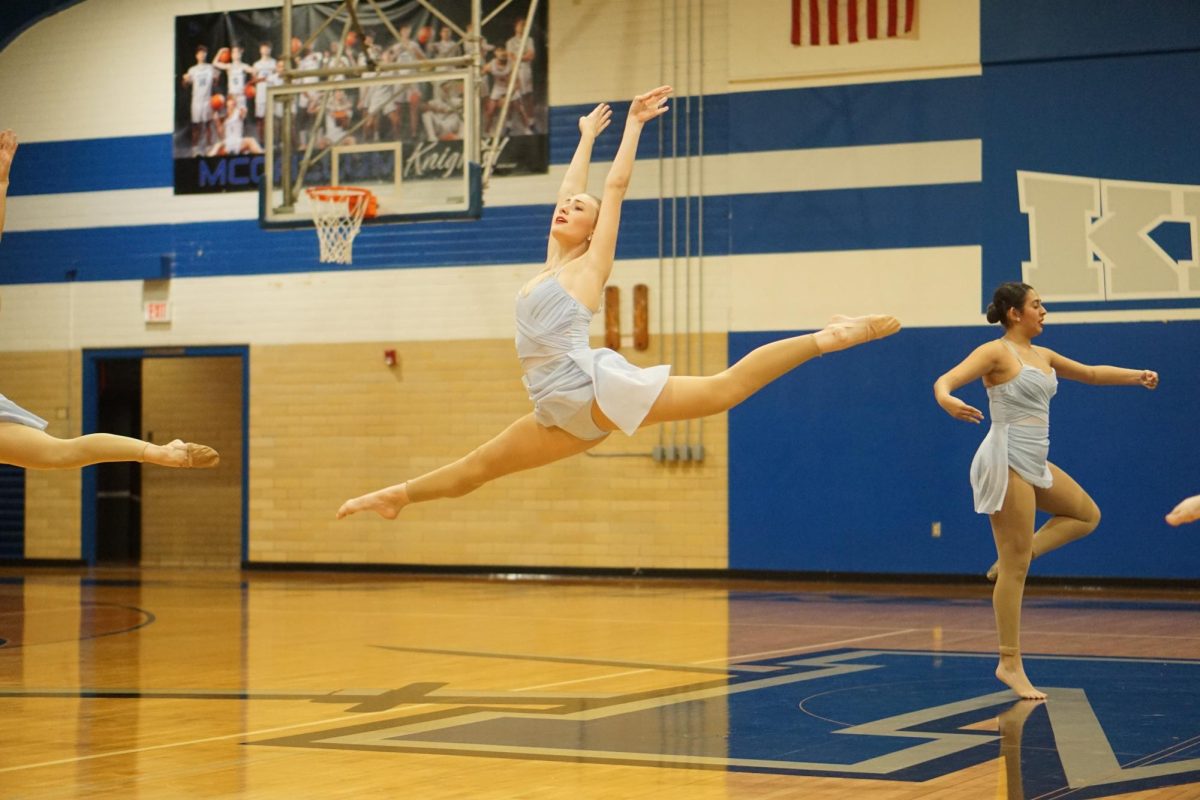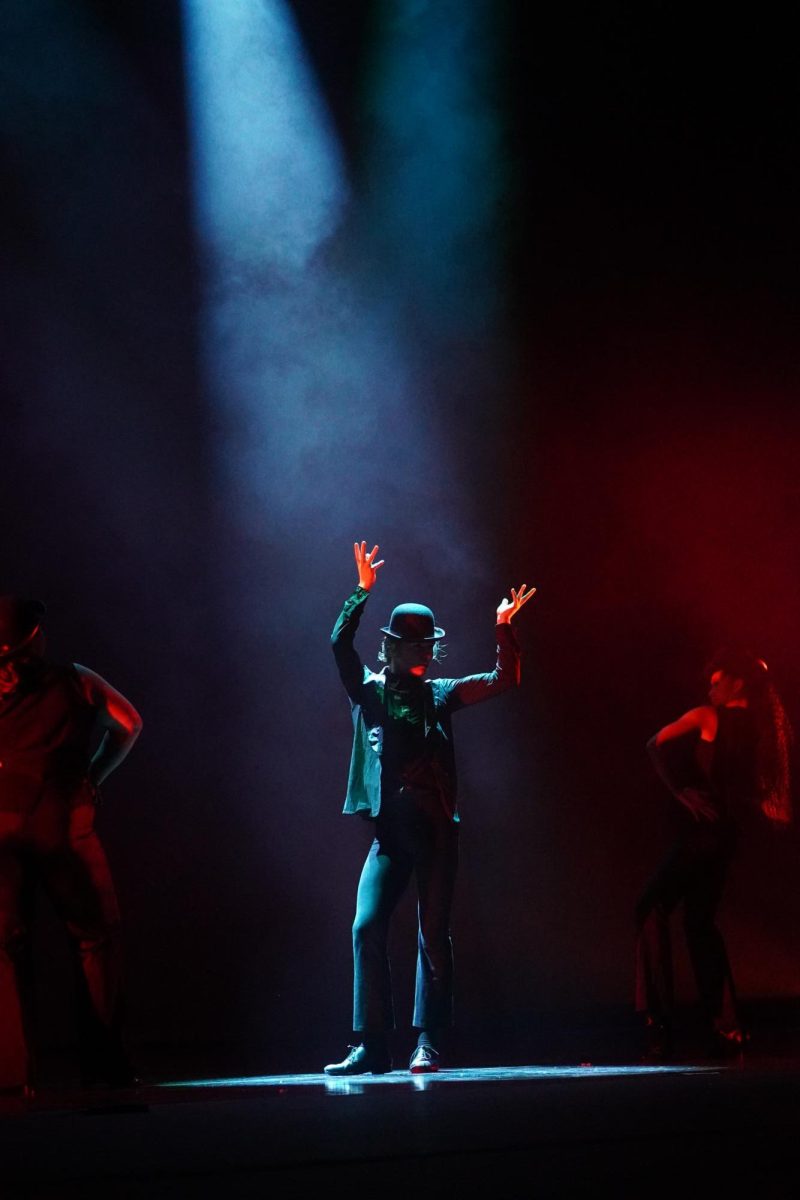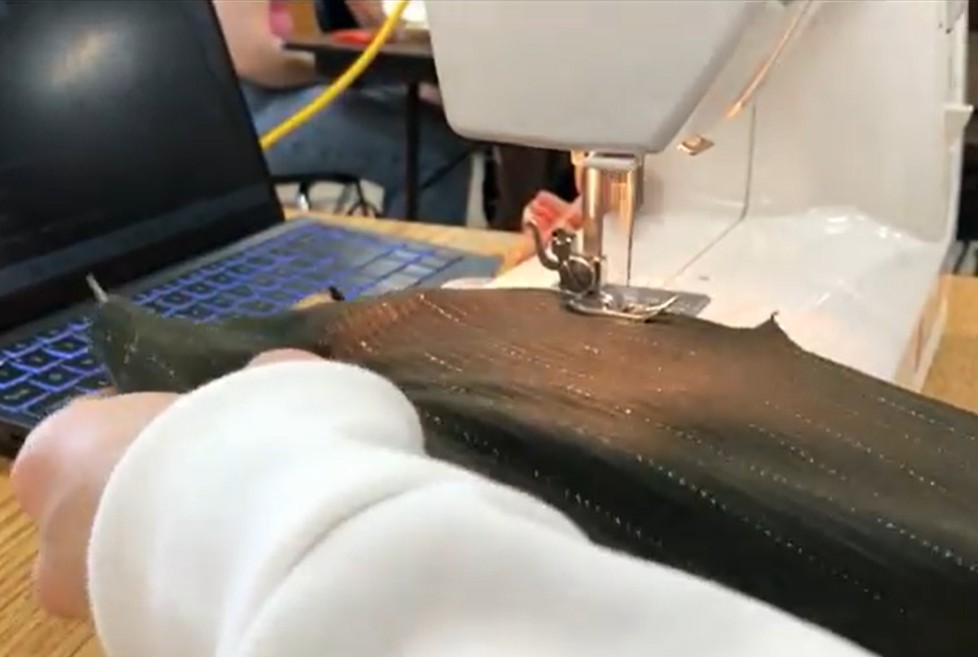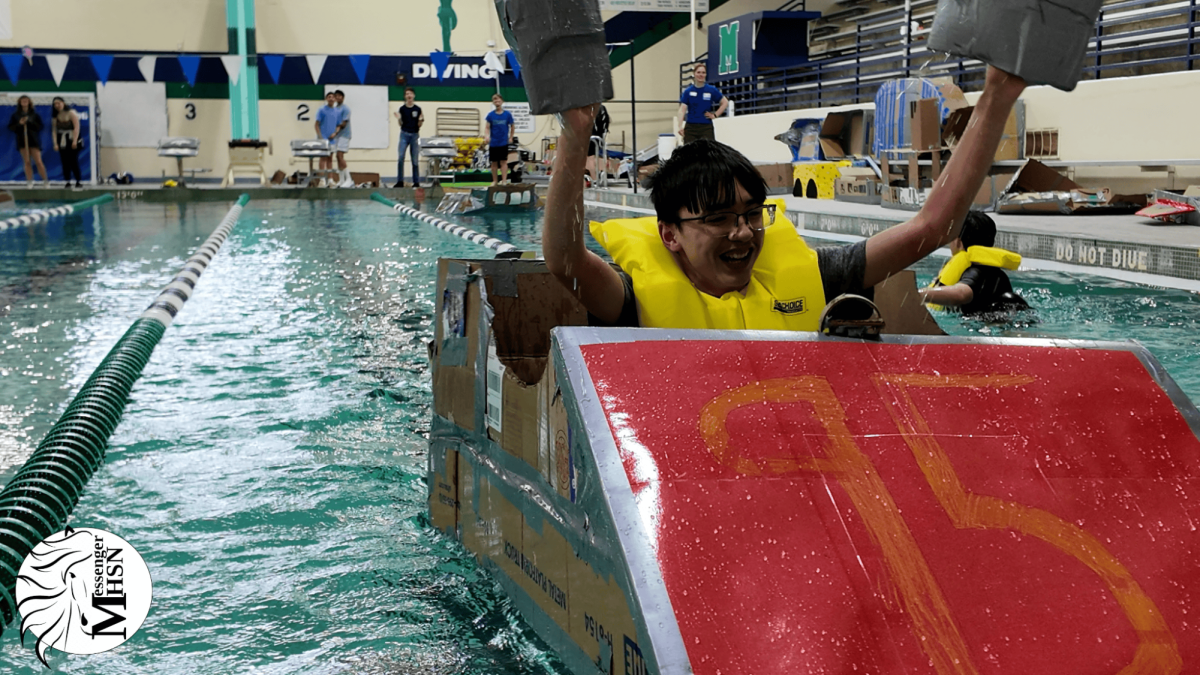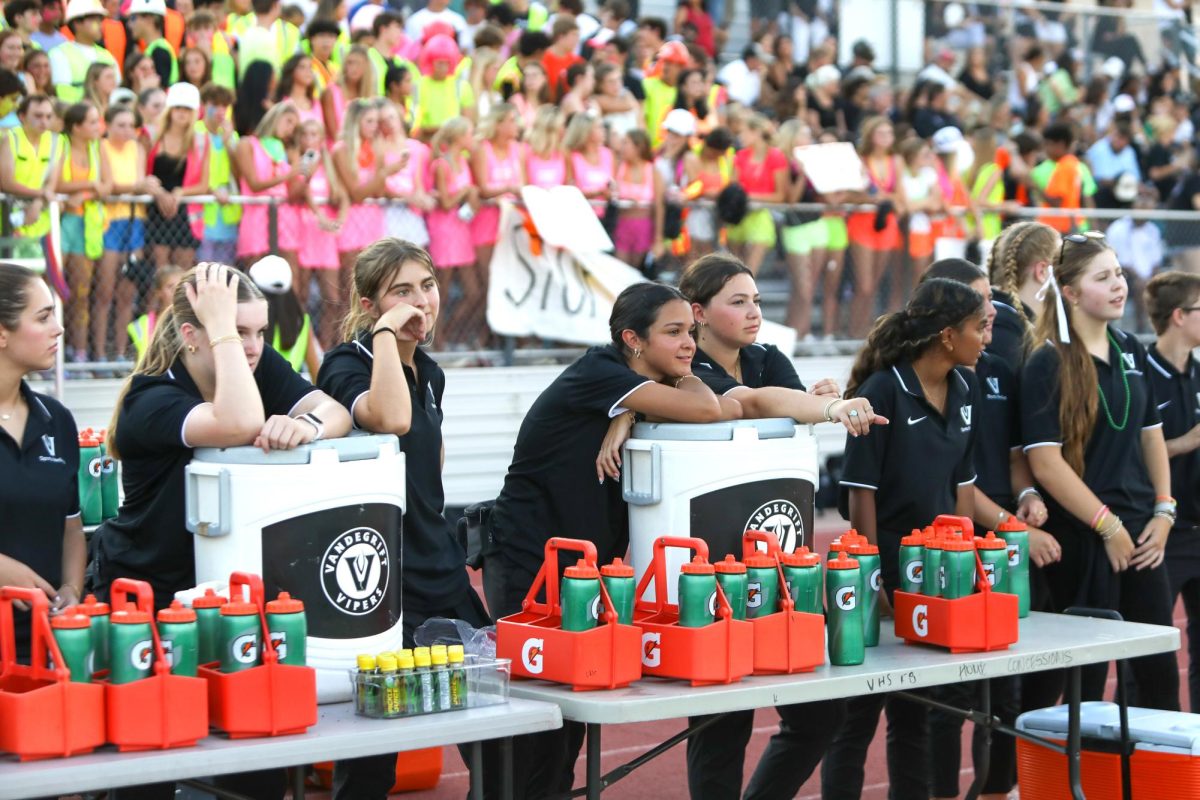Crickets buzz across the blinding stadium lights, casting shadows on the people below. Joyous screams erupt from the packed stands and Chicken Express drinks tip over as people jump, celebrating a touchdown. Just as the crowd cheers for the players scoring points, gasps ripple as players tumble to the ground after collisions, limping off to the sideline with the help of student trainers.
Often under the radar, Sports Medicine students attend every athletic game of the year. This class, offered to anyone in any grade, teaches students taping techniques, immediate first aid, emergency care, rehab, and more. Like the crew of a ship, the trainers also fill in for other needed duties at athletic events. The students often film games, hand out uniforms for the teams, and provide water for the players.
“My favorite job to do is Drip Drop, and that means I’m on the sideline with water and electrolytes,” junior Caroline Erickson said. “We make sure that the players are staying hydrated and keeping their electrolytes high, so they don’t cramp, and they’re able to perform better. It’s really fun to be able to interact with the players.”
Out of the 35 student trainers, 17 attend every varsity football game.
When Sports Medicine was first offered as a class when the school opened in 2009, it began with a single head trainer and two students. Despite currently prevailing as one of the largest staffs in Central Texas, the students maintain traditions that provide a strong relationship within the class.
“My favorite event is a trainer Olympics every spring, hosted by Georgetown,” senior Louis Davies said. “It has a lot of fun activities, like racing while dragging eight gallon water coolers. It’s just really cool and a great opportunity to see trainers from all over Central Texas.”
According to Davies, the community runs strong not just within the trainers, but among the athletes as well. Not only do the student trainers load and take care of equipment, but they often step in to aid the team in other tasks. These students provide medical care and physical therapy year round, for any high school and middle school athletes.
“I think most of the players start to realize how much [the student trainers] do behind the scenes, and appreciate and respect them,” athletic trainer Chris Shivers said. “I know the coaches do. The coaches all appreciate everything they do, because our kids are always glad to step up and help.”
Although football consumes a large portion of what the trainers take care of, in the spring, the students receive assignments for a specific sport. The students bid on their second sport, usually with three or four assigned to every activity. The trainers cover every sport on campus and every game of the year. Junior Katelyn Tan was paired with baseball during her sophomore year and helped with the baseball players’ treatments and hydration.
“I think trainers are super important to get athletes back to their full potential, and also provide them with the care that they need throughout the day,” Tan said. “By having so many kids, it’s easier to get everything done, and we can help out the head trainers as much as possible.”
The head trainers take care of several jobs, including leading the classes, deciding the coursework and organizing who will attend which games, as well as set final verdicts on evaluating injuries. Just like all other extracurriculars, if students fail a class, they become ineligible to attend events. In the fall season, grades are mostly based on participation, while in the second semester, the classes shift towards more academic work and lectures.
“[The] biggest thing to take away from the classes is to serve others and be a part of something bigger than yourself,” Shivers said. “I think that’s the most important thing, especially coming through high school when kids can develop.”
By helping athletic teams during the year, the student trainers can feel a sense of belonging with the teams. Spending hours taping and analyzing injuries in close spaces builds the camaraderie between athletes and trainers.
“We got to celebrate with the team after the games, and it was really exciting,” Tan said. “The atmosphere was super high energy, and we were so excited. People were just running and hugging, and the football booster club bought us dinner after.”
At the games, students also receive opportunities for hands-on experience. A number of the students in the Sports Medicine classes express interest in going to the medical field after graduation. Participating in this course provides chances for the students to interact with athletes, with the mentorship of the head trainers.
“The interaction with the trainers is invaluable,” Davies said. “They’re really knowledgeable and passionate about what they do. Getting their insight for treatment plans and having the independence to alter it yourself, that’s the best part of the class. It’s definitely helped prepare me for the future.”
This story was originally published on Vandegrift Voice on November 21, 2024.

